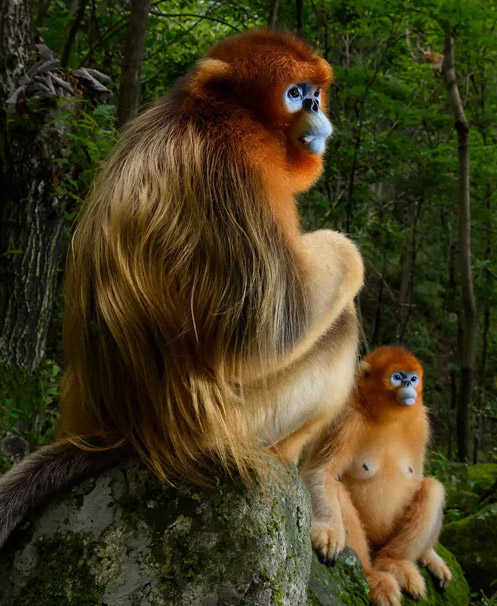.svg)
1. Bring Binoculars
While binoculars are one of the most useful wildlife-watching instruments, picking the right pair may be challenging. An all-purpose pair could have a magnification of 7 or 8 and a lens diameter of 35 or 40 (7x35 or 8x40), which gathers a lot of light for wildlife watching at dawn or twilight. Although more powerful binoculars may be purchased, they will be significantly heavier, and weight must be considered when hiking into a viewing place. Finding the animal with your naked eye first is a good tip when utilizing binoculars. Then, without moving your attention or focusing, bring the binoculars to your eyes.
.svg)
2.Wear Appropriate Clothing Layers
Layering your clothing helps you to adapt to changing weather and temperatures. How many layers to bring depends on the season and time of day. If you're going out in the evening, plan ahead and pack an additional layer. Consider the colour of your outfit, as birds have excellent colour vision. Keep hunting seasons in mind, and when appropriate, wear bright orange.
.svg)
3.Use Field Guides
Identifying animals, learning about their habitats, and enriching your viewing experience may all be done with the use of field guides, wildlife apps, and other tools. In more remote regions, these resources can even be utilized without cellphone connectivity.
.svg)
4.Go Out When Wildlife Is Active
Seasons and times of day influence wildlife behaviour. The months of April and June, as well as September and October, are the best for observing wildlife in New Hampshire. These are the months when migrating birds are most busy, and animals are either raising young in the spring or preparing for the winter in the autumn. The early and final hours of daylight are when wildlife is most active, thus the time of day might affect your experience.
.svg)
5.Be Patient, Still, and Silent
Slow down, take a few cautious steps, come to a complete halt, listen, and glance about. It's possible that this will increase your chances of sighting animals. Listen for noises and outdoors while keeping an eye out for movement or changes in shape. Avoid producing noise, such as treading on fragile sticks, and if possible, walk against the wind. Allow plenty of time because you won't likely observe much animals right away once you get at the viewing area. Wildlife will be more likely to go about their daily activities if you sit immobile and try to fit in with your surroundings.
.svg)
6. Use a Blind Spot
You'll have a better chance of having a successful watching experience if you can disguise yourself. Standing behind a tree or shrub rather than out in the open can be beneficial. Automobiles, boats, and canoes all make great viewing blinds. Animals are accustomed to seeing these things and may not be alarmed or upset until you attempt to flee.
.svg)
7. Prepare For Your Outing
Before you go, make sure you know where you're going because some areas are secluded and lack amenities. Look for weather and road conditions alerts. If you're trekking into a location, plan ahead of time and pack map, water, suitable footwear, food, and clothes. During the spring and summer, you should expect to get bitten by insects and should take precautions to avoid them. Remember to wear a hat, sunglasses, and sunscreen to avoid being sunburned.
